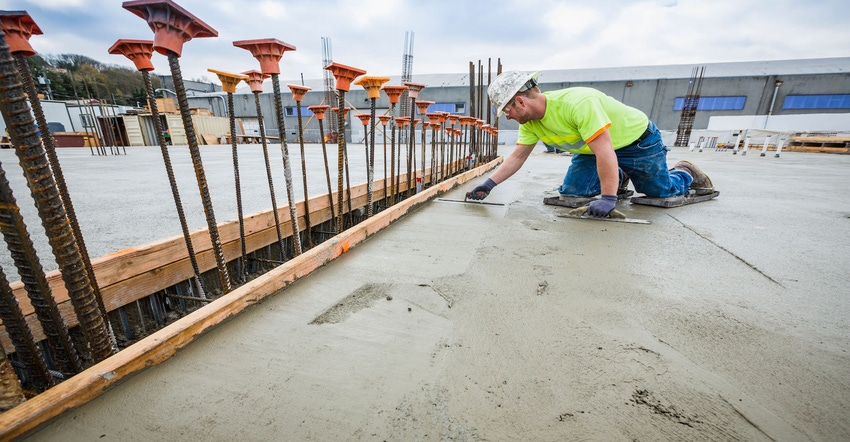DELETE
With the effects of inflation continuing to hit the concrete industry, here's what you need to know to help your concrete and construction businesses ride out the storm—including what the experts are seeing across the industry, where the trends are heading and when relief may be expected.
July 20, 2020

There is no escape from the impacts of inflation on the construction industry. That includes the cost of concrete production, delivery to job sites and the price for the finished product. However, knowledge is power, as the saying goes. So here's what you need to know to help prepare your company (and clients) for the effects of inflation coming down the pipeline.
1. Inflation rates for consumer and producer price indexes continue to rise
In its latest report, the U.S. Bureau of Labor Statistics (BLS) found the inflation rate for the consumer price index (CPI) to be 9.1% for the 12 months ending in June—the most significant increase seen since November 1981, according to the BLS press release.
"A more compelling number along with that is the producer price index that went up 11.3%," said Dr. Martin R. Cantor, director of the Long Island Institute for Socio-Economic Policy. That index (also known as PPI) includes concrete, said Cantor. "The PPI for construction materials was up 51% since January 2019, pre-pandemic."
Compared to January 2019, said Cantor, the latest numbers from April 2022 from the BLS and the Federal Reserve Bank of St. Louis "show that gasoline went up 72% and crude oil went up 76%, and both are involved in the cost of diesel delivery of the component parts of concrete to where it is manufactured and sites where it is used." Cantor said there is, unfortunately, little that producers and purchasers can do. "The delivery cost has gone up because you have a supply chain issue that impels inflation, and you have fewer drivers to deliver the product where it's needed."
2. Wages are increasing due to related growth of minimum wage requirements and gas prices
Cantor noted an increase in wages due to inflation and an increase in minimum wage and gasoline prices. "There is nothing they (the businesses) can do about it except pass it on unless they become more efficient," he said. "This is why there are increased costs in construction projects to pay for concrete. Concrete producers and general contractors are at the receiving end of goods and services."
3. The Fed is likely to increase interest rates
Cantor believes that the Federal Reserve System will increase interest rates by 75% and, at the same time, take $95 billion per month out of the economy in cash.
"They are decreasing liquidity in the marketplace, which makes home mortgage and construction costs more expensive while decreasing the number of buyers for real estate—both commercial and residential," he said. "Legislation in New York State awaiting the governor's signature would allow for an increase for inflation for bids that were approved pre-pandemic so that contractors don't get hurt."
4. What can concrete pros do? Stay informed and ride out the storm
Cantor stressed that purchasers of concrete are just as stuck as producers, nor does he see any relief soon.
"We're going to be in a recession, and right now, we're in a jobless recession because we still have plenty of jobs," he said. "Once the Federal Reserve interest rates and tightening of the money supply start taking hold, which will probably be felt in September, we'll see some impacts. But I don't see things changing until 2023."
Cantor's analysis was backed up by New York-based Peter Scalamandre & Sons Inc.—in addition to being a respected general contractor, produces concrete via Seville Central Mix (SCM), a ready-mix concrete business providing high-quality service to the New York City metro area for over 40 years.
"Our hands are tied right now," said company president Peter Scalamandre. "Prices for materials and fuel have gone crazy. Cement is up 25% this year, aggregates—sand and stone—are probably up 20%, and fuel is up 100%."
Asked if concrete producers can do anything to reduce costs, Scalamandre replied: "It is not much you can do to save money right now. You used to be able to put slag and fly ash to reduce the cement requirements. We have been doing that for years, but these prices have increased as much as or more than cement. So these advantages have gone away."
However, he noted that SCM customers appreciate the efforts to minimize production costs, even considering that SCM's concrete mixing trucks run on diesel fuel.
"It (diesel) has gone higher than gasoline," said Scalamandre. "We're on the spot market. So I pay for fuel based on the daily price."
SCM has added a fuel surcharge to cover increased costs.
"I told them that I have no choice," said Scalamandre. "Everyone, at least in this area, is doing this, and it appears to be an industry-wide practice as far as I know."
End-users for concrete have no choice but to pay the market price.
"They may switch around with suppliers to save a $1 or $2 per cubic yard here and there," said Scalamandre. "They see it with everything they buy; everything has gone up, including pipe—concrete, steel and plastic."
Sharing similar sentiments with Cantor, Scalamandre does not anticipate immediate relief for producers and purchasers.
"I assume it will continue into the first quarter of the new year," he said.
You May Also Like


